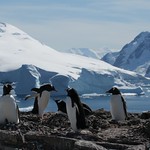
Polar expedition parties and scientists living in the Antarctic are subjected to some of the most challenging weather conditions on earth, and if they’re not well prepared with the correct Antarctic foods, chances of survival drop by at least 60%. The process of understanding what the human body requires in such stressful conditions began as trial and error. Several of the first polar explorers learned the hard way what their bodies required to maintain the physical and mental strength required to beat the odds when taking on the planet’s most extreme conditions.
Sir Ernest Shackleton
Sir Ernest Shackleton, one of the world’s first Antarctic explorers, inspired a 6,000-calorie meal that is meant to provide the body with pure energy and fuel to survive an extreme undertaking like his Antarctic expedition. Shackleton tried to reach the South Pole over a century ago; unfortunately he was unsuccessful, but his story paved the way for future explorers to take their nourishment much more seriously in these cases. The “Shackleton meal” consists of pork cracklings, a 20oz steak and a thick stew called ‘Hoosh.’
Antarctic Food
Antarctic food is part of the explorer’s survival kit. Scientists and adventurers alike have discovered that hypothermia and hunger are closely linked. Bodies require energy and food to keep warm, so a balanced diet is essential. Typically, an Antarctic explorer’s food supplies are prepared in their city of departure. Various food manufacturers deliver the food by aircraft or ship, which means that for much of the exploration, the food is either frozen or tinned.
Much like Antarctic animals all play a part in an intricate food web, similar principles apply to the people living on Antarctic food; the balanced diet is broken down to carbohydrates, fats and proteins, vitamins, minerals, fibre and water. The main dishes of Antarctic food are high in carbohydrates and fats, which keep the body energised, while the protein and fibre are required for the efficient functioning on the body.
As mentioned before, through trial and error it’s been determined that for an exploration to be successfully and safely pulled off, all Antarctic explorers’ food needs to sustain the daring men and women who will be travelling the frozen terrain by dog sled – which in itself burns up 5,000 calories per day. There’s also the hauling of sleds to take into account, and that alone can burn 6,500 calories per day. One can see why Shackleton’s Antarctic food menu requires such a high calorie count, to be consumed regularly during the Antarctic journey.
Weather Conditions
Recipes designed for Antarctica do not include many fruits or vegetables, as these foods are often unable to withstand the conditions. Antarctic food packages for travellers needs to be both lightweight and high in energy, and that’s where the immense amount of chocolate bars come in. Antarctic explorers keep these on them at all times to ensure an immediate boost of energy. Frozen sandwiches and fruit just won’t do the trick, apart from the fact that they’re frozen solid – they take up too much space and don’t provide the quick energy boost that chocolate does.
As the evolution of daring explorations continues, the fine-turning of Antarctica food supplies and recipes will continue to ensure that food manufacturers around the world deliver the highest-energy foods for polar survival.
Citations:
- CC image from Flickr
Dave Tucker enjoys writing on a wide variety of topics. He came across this topic while looking for information on chilled food distributors and the ways that chilled courier services operate for remote operations. With a keen interest in history, travel and exploration, this story has inspired Dave to learn more about the extreme explorations of the world.
